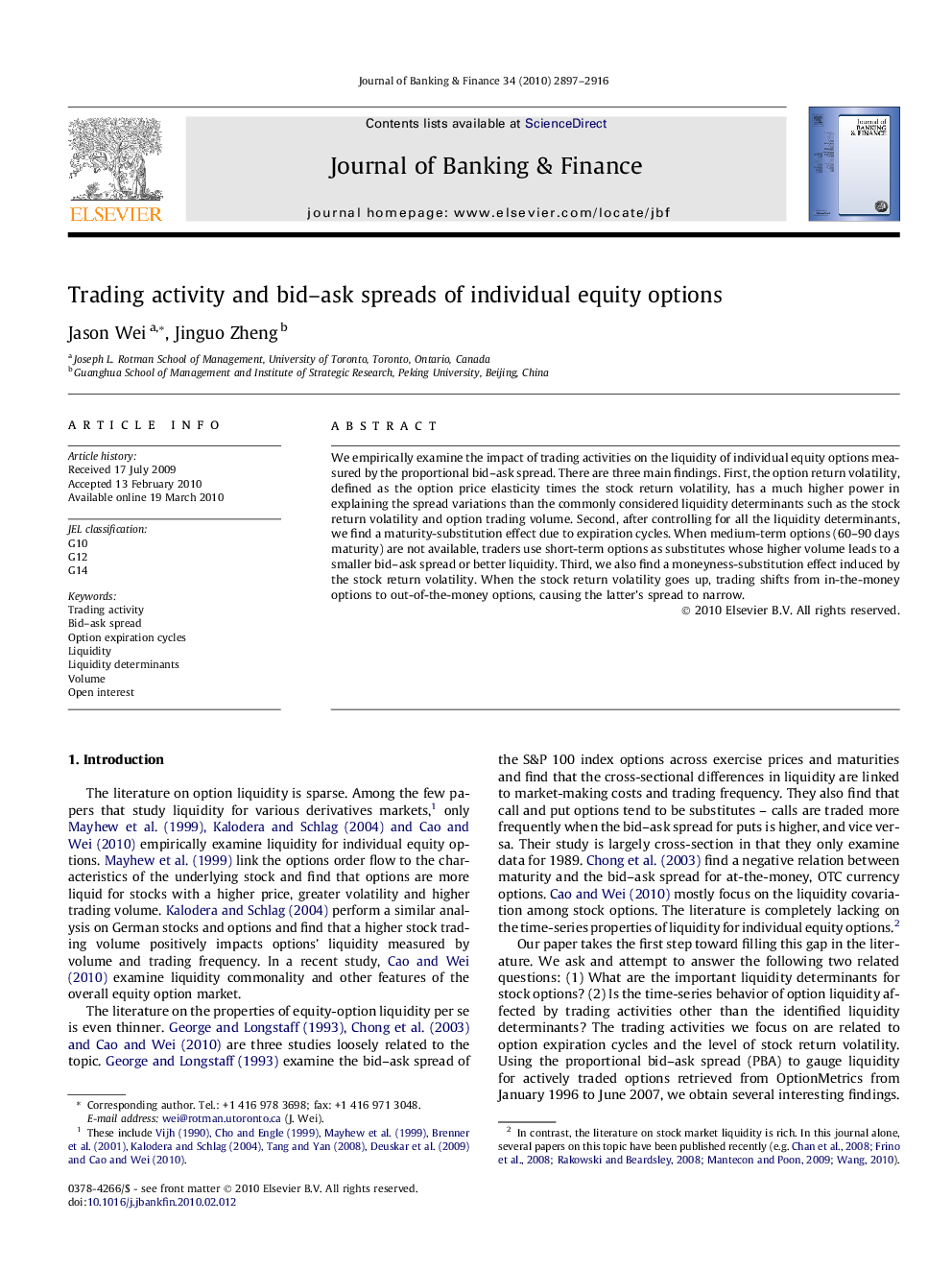| Article ID | Journal | Published Year | Pages | File Type |
|---|---|---|---|---|
| 5090196 | Journal of Banking & Finance | 2010 | 20 Pages |
Abstract
We empirically examine the impact of trading activities on the liquidity of individual equity options measured by the proportional bid-ask spread. There are three main findings. First, the option return volatility, defined as the option price elasticity times the stock return volatility, has a much higher power in explaining the spread variations than the commonly considered liquidity determinants such as the stock return volatility and option trading volume. Second, after controlling for all the liquidity determinants, we find a maturity-substitution effect due to expiration cycles. When medium-term options (60-90Â days maturity) are not available, traders use short-term options as substitutes whose higher volume leads to a smaller bid-ask spread or better liquidity. Third, we also find a moneyness-substitution effect induced by the stock return volatility. When the stock return volatility goes up, trading shifts from in-the-money options to out-of-the-money options, causing the latter's spread to narrow.
Related Topics
Social Sciences and Humanities
Economics, Econometrics and Finance
Economics and Econometrics
Authors
Jason Wei, Jinguo Zheng,
